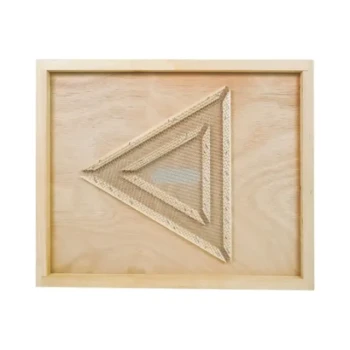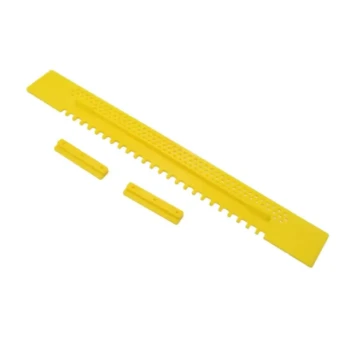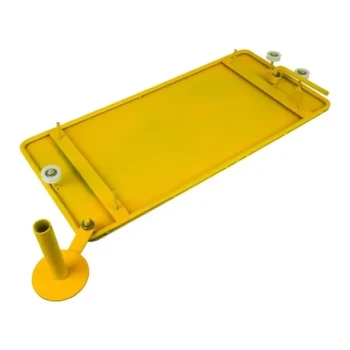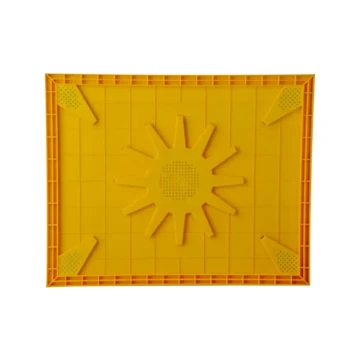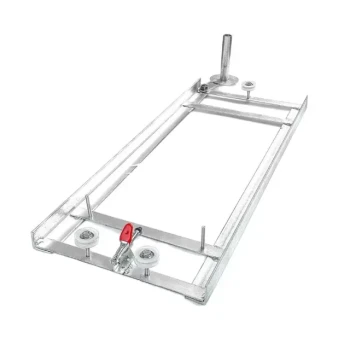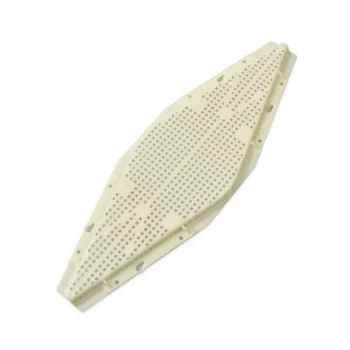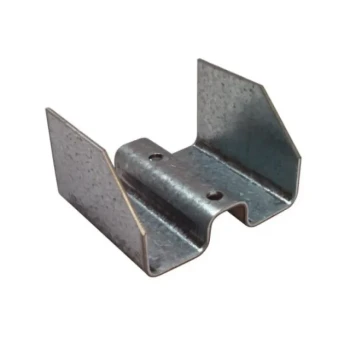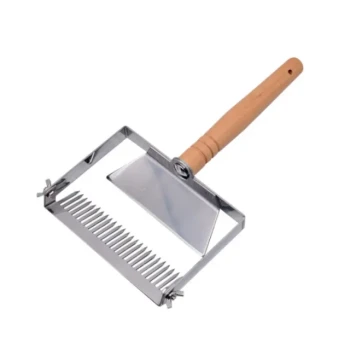The key feature of the Cypress Screened Bottom Board designed to reduce drafts is an integrated rail system that holds a removable corrugated board. This insert, often called a closure board or stick board, slides underneath the screen, effectively sealing the open mesh and preventing cold air from entering the hive from below.
The true value of this design is not just ventilation, but controlled ventilation. It provides the beekeeper with the ability to adapt a single piece of equipment from maximum summer airflow to a protected, draft-free winter enclosure, all with a simple insert.
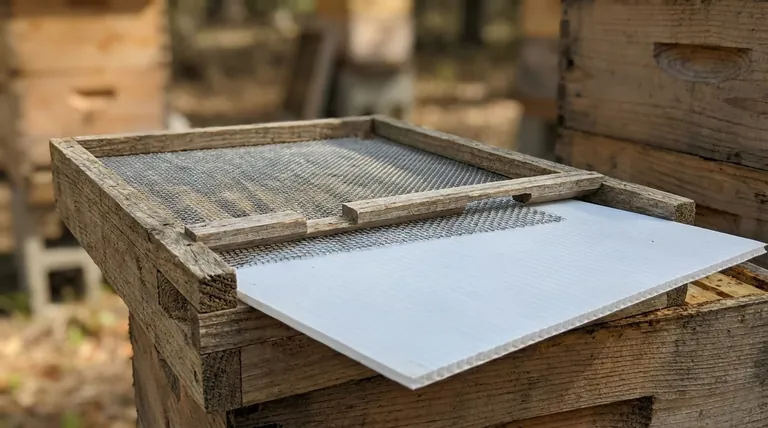
How the Draft Reduction System Works
Understanding the mechanics of this system reveals its role in managing the hive's internal environment throughout the year. It’s a simple but highly effective dual-purpose design.
The Integrated Rail System
At the core of the design is a set of small rails or grooves built into the underside of the bottom board's frame. These rails run parallel to the hive entrance.
Their sole purpose is to serve as a track for the insert board to slide into and out of place smoothly.
The Corrugated Insert Board
This is the component that actively blocks the draft. It is typically a sheet of corrugated plastic or a similar rigid material cut to the precise dimensions of the screened area.
When slid into the rails, this board completely covers the screen, creating a solid floor. When removed, the screen is left fully exposed to the air.
From 'Open' to 'Closed' Mode
In 'open' mode (without the insert), the screened bottom provides maximum ventilation. This is ideal for hot summer months, as it helps the colony cool the hive and reduces bearding.
In 'closed' mode (with the insert installed), the board blocks airflow, creating a solid bottom. This is essential for cold winter months, as it prevents cold drafts from chilling the winter cluster and helps the bees conserve energy.
The Deeper Purpose: Managing the Hive Environment
The ability to switch between an open and closed bottom is about more than just drafts; it's a fundamental tool for proactive hive management.
Summer Ventilation and Mite Control
The primary benefit of a screened bottom is superior ventilation. During summer, this helps bees regulate temperature and humidity more efficiently.
It also serves as a critical tool for Integrated Pest Management (IPM). Varroa mites that fall off bees will drop through the screen and out of the hive, reducing the overall mite population.
Winter Protection and Insulation
A bee colony's primary task in winter is to maintain the temperature of its cluster, typically around 95°F (35°C). Cold drafts from below force the bees to consume significantly more stored honey to generate heat.
By sliding the insert board in, you create a solid floor. This not only stops drafts but also creates a small pocket of dead air between the insert and the screen, which provides a minor insulating effect.
Understanding the Trade-offs
While highly useful, this system is not without its considerations. Effective use requires understanding the consequences of each mode.
Risk of Moisture Buildup
The biggest trade-off of closing the bottom board is the reduction in ventilation. A colony produces a large amount of water vapor through respiration, which must be able to escape the hive.
When the bottom is sealed, this moisture can condense on cold inner surfaces, leading to mold or chilled bees. It is critical to ensure the hive has adequate upper ventilation when the bottom insert is in place.
The Need for Active Management
This is not a "set it and forget it" piece of equipment. The beekeeper must remember to install the board before the first hard frost and remove it once the weather warms in the spring.
Forgetting to install it can lead to a weakened or lost colony over winter. Forgetting to remove it can cause the hive to overheat and struggle with ventilation during the spring nectar flow.
Making the Right Choice for Your Goal
This feature makes the screened bottom board a versatile tool. How you use it depends entirely on your beekeeping objectives and local climate.
- If your primary focus is mite management: The insert can be used as a "stick board" by coating it with oil or Vaseline to perform accurate Varroa mite drop counts at any time of year.
- If your primary focus is surviving cold winters: Use the insert to close the bottom board throughout the coldest months to protect your colony from life-threatening drafts.
- If your primary focus is managing a hot climate: You can leave the insert out for most or all of the year to provide your bees with maximum cooling ventilation.
Ultimately, this simple feature transforms the screened bottom board from a static component into a dynamic tool for year-round hive management.
Summary Table:
| Feature | Function | Benefit |
|---|---|---|
| Integrated Rail System | Holds a removable insert board | Allows for easy seasonal adjustment |
| Corrugated Insert Board | Slides in to seal the screen | Blocks cold winter drafts, reduces bee stress |
| Open Mode (Summer) | Insert removed, screen exposed | Maximizes ventilation for cooling and mite control |
| Closed Mode (Winter) | Insert installed, screen covered | Creates a draft-free, insulated base for the winter cluster |
Upgrade your commercial apiary with HONESTBEE's durable, versatile equipment.
Our Cypress Screened Bottom Boards are built for beekeepers who demand precision and control. This design allows you to actively manage hive health, from reducing Varroa mite loads in the summer to protecting your valuable colonies from deadly drafts in the winter. This versatility maximizes colony strength and honey production potential.
HONESTBEE supplies high-quality beekeeping supplies and equipment to commercial apiaries and distributors through wholesale-focused operations. Let us help you build a more resilient and productive operation.
Contact HONESTBEE today to discuss wholesale pricing and equip your hives for success in every season.
Visual Guide
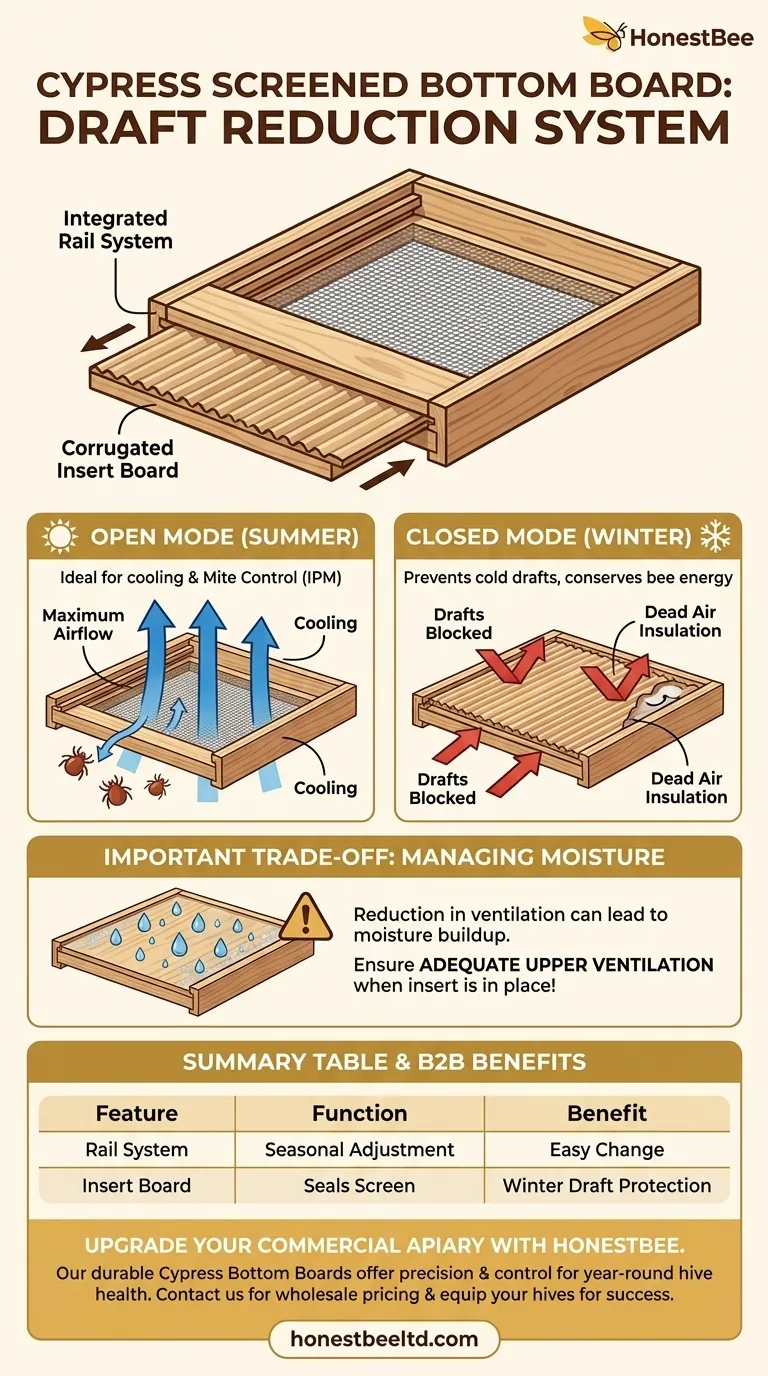
Related Products
- Langstroth Screen Bottom Board for Beekeeping Wholesale
- Australian Pine Wood Langstroth Screen Bottom Board for Wholesale
- HONESTBEE Wooden Bee Escape Board with Triangle Mesh Design for Beekeeping
- Professional Galvanized Hive Strap with Secure Locking Buckle for Beekeeping
- Professional Reversible Beehive Hive Entrance
People Also Ask
- What are the benefits of using a screened bottom board for beehives? Improve Ventilation & Mite Control
- What are the assembly options for the Cypress Screened Bottom Board? Ready-to-Use for Immediate Hive Health
- What are the main benefits of using a Screened Bottom Board in beekeeping? Enhance Hive Health & Productivity
- How should the screened bottom board be used throughout the year? A Guide for Healthy Hives
- What are the benefits of using a screened bottom board in warm or humid climates? Boost Hive Health & Control Pests


